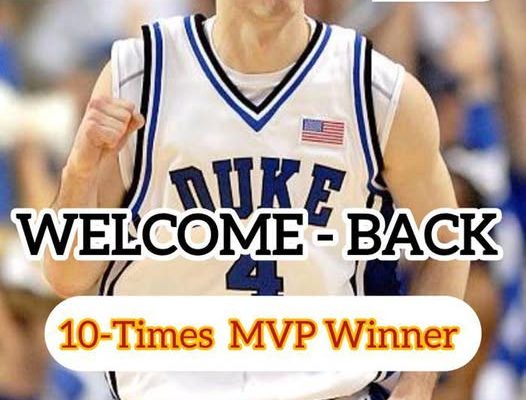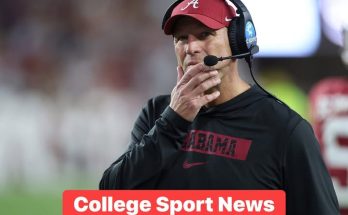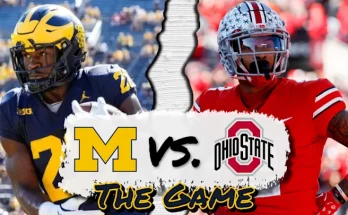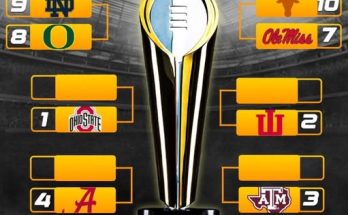In a stunning development that no analyst or insider could have accurately predicted, the towering 7-foot-9 high school phenom widely considered the No. 1 player in the nation has just re-committed to Duke University. This decision, which comes after months of speculation, decommitment rumors, and even hints at overseas professional options, instantly reshapes the college basketball landscape and reestablishes Duke as the undisputed mecca of elite-level talent development.
This player’s name—already etched into recruiting lore—had been on every coach’s wish list from the moment he dunked without jumping during a freshman-year tournament game. At 7-foot-9 with unprecedented coordination, mobility, and touch, he isn’t just a unicorn; he’s a generational outlier. Coaches, fans, and NBA scouts alike have struggled to find adequate comparisons. His combination of size and skill is almost mythological: part Kristaps Porziņģis, part Victor Wembanyama, part something we’ve never seen before.
When he originally committed to Duke last fall, it was hailed as the signature moment of head coach Jon Scheyer’s recruiting tenure. The announcement, made via a quiet Instagram post followed by a formal televised ceremony, sent shockwaves throughout the college basketball world. But that excitement was short-lived. Just three months later, whispers of dissatisfaction with the program’s NIL strategy and questions about role clarity began to leak out. In January, the bombshell dropped: the nation’s top-ranked prospect was reopening his recruitment.
The news left Duke stunned. Losing a player of that caliber didn’t just damage their 2025 class—it wounded the program’s momentum, public perception, and recruiting pipeline. Other blue bloods pounced immediately. Kentucky launched a full-court press. Kansas rolled out NBA alumni on Zoom calls. North Carolina offered him the rare “franchise player” pitch. Meanwhile, international clubs from Spain to Australia dangled multimillion-dollar professional contracts, knowing they had a small window to lure a future NBA megastar.
And just like that, the biggest recruitment drama in recent memory was underway.
For months, the basketball world watched every step of his journey. He toured other campuses. He spent time training in Los Angeles with elite personal coaches. He explored G-League Ignite as an option. Rumors even surfaced that he might forgo traditional pathways altogether and sign with an experimental startup league in Dubai that offered a $2 million signing bonus.
But throughout it all, the whispers that Duke might still be in the running never quite died. While fans speculated about money and exposure, those close to the player emphasized a deeper motivation: legacy. Despite all the distractions, he had remained in contact with Coach Scheyer. Duke’s staff continued to engage, not with desperation, but with patience and trust.
That persistence paid off this week, when in a surprise appearance at Duke’s summer prospect camp, the 7-foot-9 phenom walked onto the court wearing a fresh pair of Duke shorts and stunned the crowd with a single sentence: “I’m coming home.”
The gym erupted. Players, coaches, fans, and staff stood in stunned silence before a wave of applause and euphoria took over. He didn’t just announce a decision—he delivered an earthquake.
In an era dominated by NIL deals, transfer portal chaos, and one-and-done uncertainty, this moment offered a rare glimpse of basketball purity. The top player in the country, who could have gone anywhere in the world and been handed the keys to a fortune, instead chose to return to Duke—a place that, despite its modern changes, still holds onto the mystique of brotherhood, tradition, and college basketball greatness.
The implications are massive. First, from a basketball standpoint, Duke instantly regains its status as a national title favorite heading into the 2025-26 season. Already boasting a stacked recruiting class, his re-commitment gives the Blue Devils a frontcourt presence that will be unmatched. He alters the geometry of the floor. He blocks shots three steps before they’re attempted. He changes offensive schemes just by existing. His passing from the high post rivals most point guards, and his range extends out beyond the three-point line. Simply put, he is not only Duke’s centerpiece—he’s college basketball’s gravitational force.
But the impact goes beyond X’s and O’s. Duke now positions itself as a true juggernaut in the NIL arms race. Sources close to the situation say that the player’s return was made possible by a recalibrated NIL strategy at Duke. Through partnerships with high-profile brands, digital content agencies, and personal mentorship, the program showed it could meet modern players where they are—without compromising what makes Duke unique.
This also sends a message to future recruits. In an era when college basketball has seen its top talent scatter to every corner of the globe, one thing is now crystal clear: Duke can still close on the biggest fish. And not just once—twice. Bringing this player back, after he walked away, is not just a recruiting win. It’s a masterstroke.
Reactions across the basketball world have been swift and emotional. NBA players from JJ Redick to Paolo Banchero tweeted their approval. ESPN immediately bumped Duke to No. 1 in their way-too-early rankings. Recruiting analysts admitted that they were “blindsided.” Social media has been ablaze with footage of his earlier highlight tapes—clips of him dunking while barely lifting his heels off the court, blocking six shots in a single quarter, and hitting no-look passes to corner shooters with terrifying precision.
For Coach Jon Scheyer, this is a defining moment. The pressure that came with replacing Mike Krzyzewski has always been immense, but victories like this validate the direction he’s taking the program. He didn’t just land a superstar—he navigated a storm of modern distractions and still emerged with loyalty intact. He built a relationship that was strong enough to bend but not break. And now, he has the most game-changing player of this generation returning to Cameron Indoor.
The player, for his part, kept things grounded during his re-announcement. He spoke about “unfinished business,” about wanting to win a national championship, about the culture Duke offers that “feels like family, not a business.” He mentioned the opportunity to play with the teammates he originally committed with, and the vision Scheyer had sold him on from the very beginning: to be not just a college star, but a college legend.
And there’s real potential for that. If he stays healthy and delivers on even half of his projected ceiling, Duke fans will be watching a season for the ages. The size, the footwork, the basketball IQ, the flair—it’s all there. But perhaps more importantly, the heart is there too. This isn’t a player simply cashing in on exposure. This is a player choosing legacy, loyalty, and leadership.
As preseason workouts approach, expectations will be sky-high. NBA scouts will flood Durham. Every Duke game will become a nationally televised event. The Cameron Crazies will prepare their chants. And the coaching staff will go to work crafting a system that lets their 7-foot-9 weapon dominate both ends of the floor.
But in many ways, the hardest part is already done. Amidst the chaos of modern basketball—where commitments are fluid, loyalty is rare, and decisions are scrutinized down to the pixel—this young man made a statement. He chose to double down on his belief in a program, in a coach, and in a vision for his future that starts in Durham and extends far beyond.
For Duke, this is more than a roster upgrade. It’s a resurrection of dominance. It’s a signal to every rival school, every recruiting class, every pundit who thought the Blue Devils were slipping. Duke is not just back—they’re towering over the competition. Literally.



